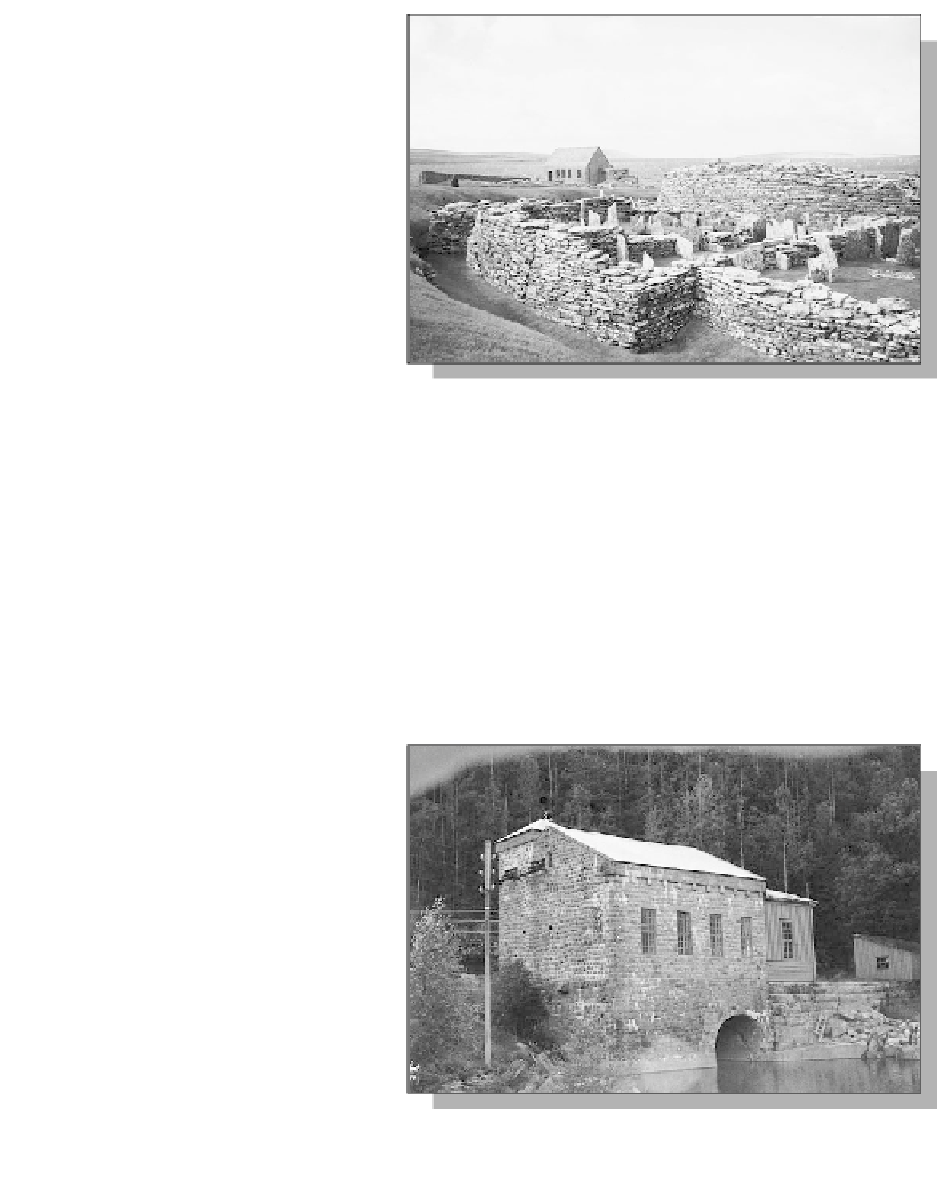Civil Engineering Reference
In-Depth Information
communal buildings with low walls
of stones taken from beaches and
fields. They were probably jointed
with clay. Walls of stone with lime
mortar began to appear around
AD 1000, with the use of stone cut
from local quarries. The stone build-
ings of this period were almost with-
out exception castles and churches. It
was not until the twelfth and thir-
teenth centuries that cut stone was
used for dwellings, and then it was
used mainly for foundations and cel-
lars. Foundation walls of granite were
used until the 1920s, later in some
places. During the Second World War
stone became more widely used, but
this was relatively short term.
Extraction and production of stone blocks has a low impact on nature and nat-
ural processes. Stone blocks use low technology plants and are well suited for
decentralization. Energy consumption is low, as is pollution. Inside a building
some types of stone can emit radon gas, though the quantity is seldom danger-
ous. The recycling potential is high, especially for well-cut stones that have been
in a dry-stone wall.
Stones which lie loose in the soil in
fields are easy to remove but are lim-
ited in their use. In larger buildings
plenty of mortar is needed with this
type of stone and it loses its ecological
advantages. All the positive aspects
of stone construction disappear if
heavy construction materials are
transported long distances. Stone, is
and must be, a local building materi-
al.
Figure 13.6: The remains of a traditional dry-walled structure
in Ireland. Source: Dag Roalkvam
Structural elements
Solid stone or even flagstones can be
used for structural stonework. There
should be no trace of decay, splitting
of layers or veins of clay. Sandstone
Figure 13.7: A hydro-power station from the end of the 19th
century, built of granite and concrete.

